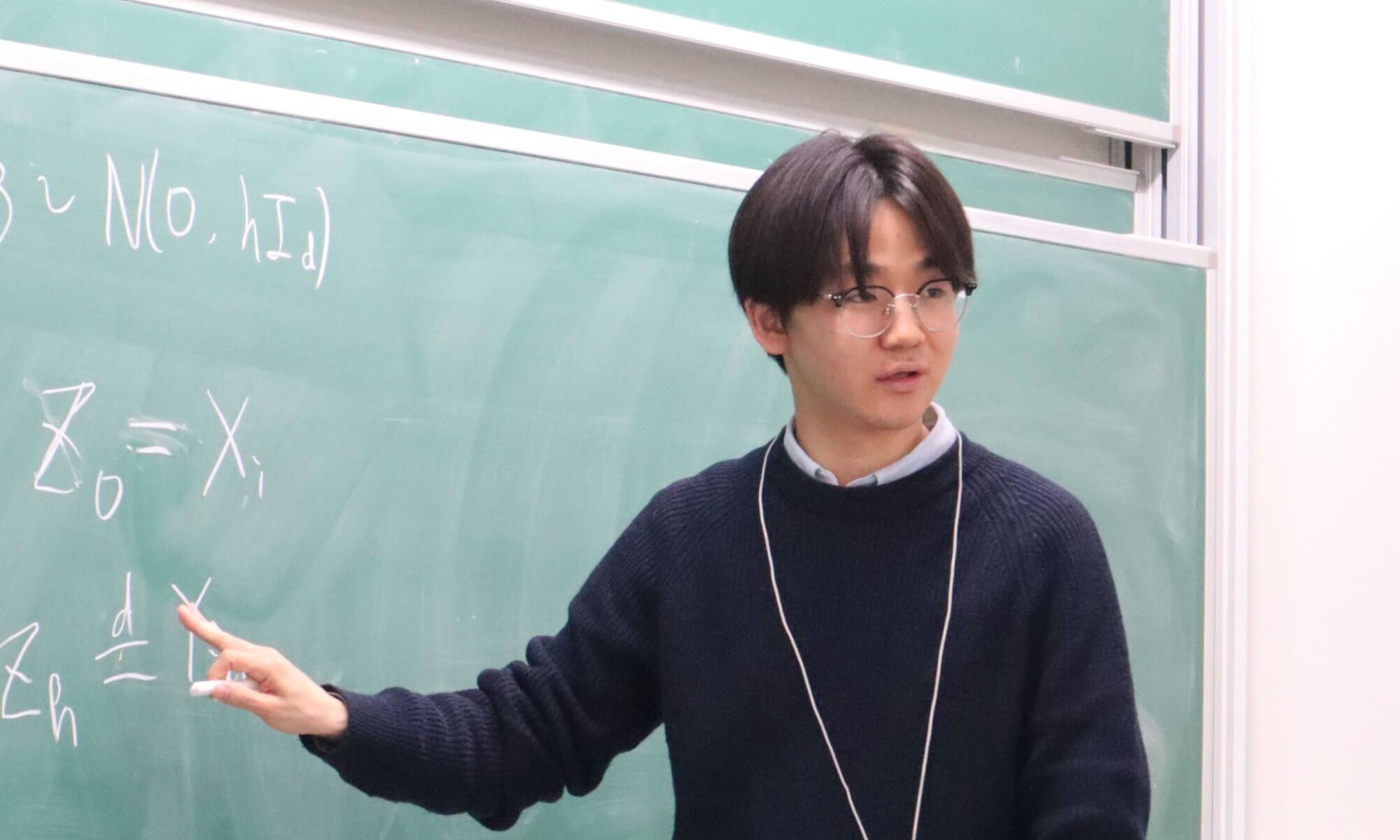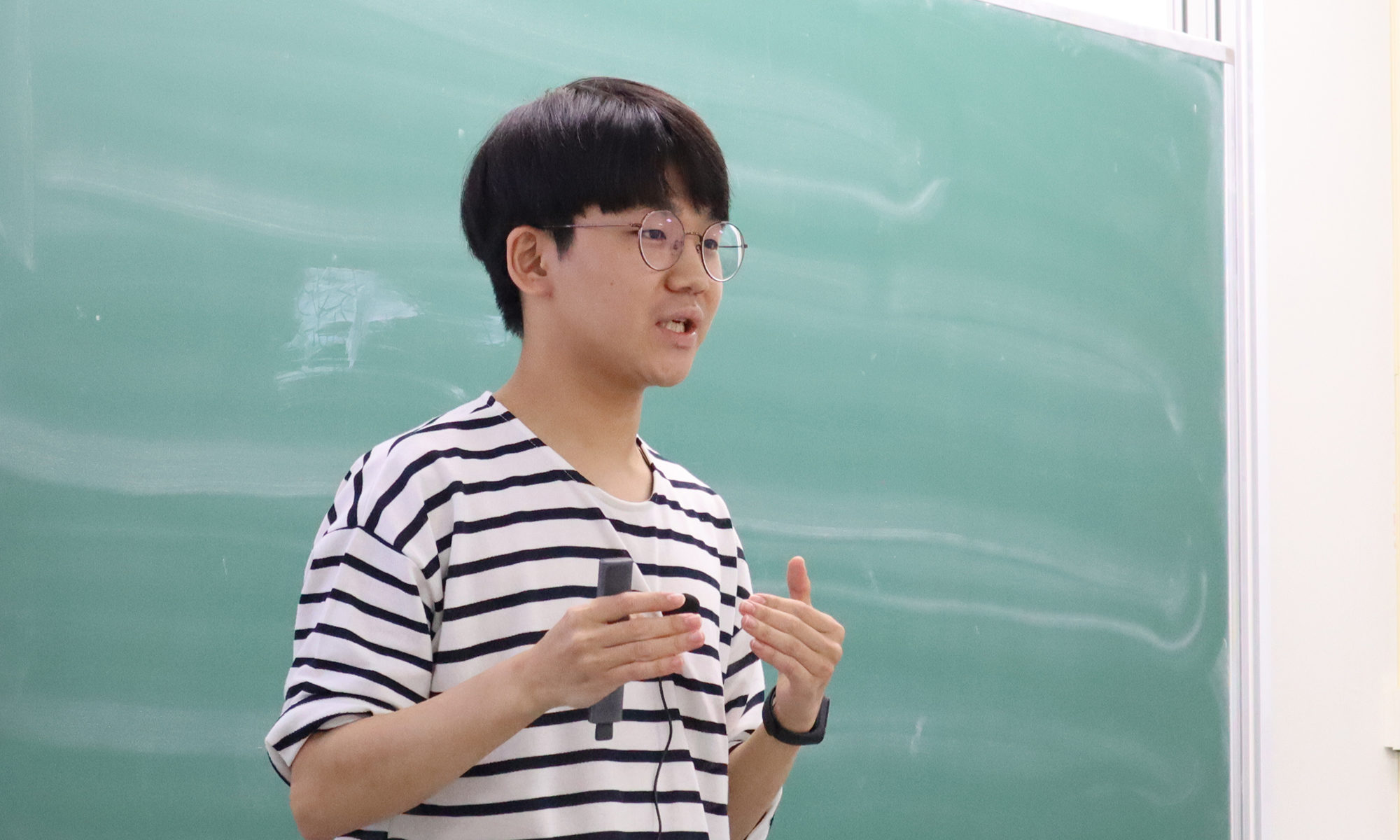On December 30, 2025, Yunbum Kook (국윤범) from the Georgia Institute of Technology gave a talk at the Discrete Math Seminar on a faster randomized algorithm for sampling points in a convex body. The title of his talk was “Sampling and volume computation“.
Yunbum Kook (국윤범), Sampling and volume computation
Since the development of the first randomized polynomial-time algorithm for volume computation by Dyer, Frieze, and Kannan in 1989, convex-body sampling has been a central problem at the intersection of algorithms, geometry, and probability. A major milestone came in 1997, when Kannan, Lovász, and Simonovits analyzed the Ball Walk and formulated the influential KLS conjecture. This was extended to log-concave distributions by Lovász and Vempala in 2006, and further accelerated by Cousins and Vempala in 2015 through warm-start generation techniques.
In this talk, I will present a gentle introduction to these milestones and how they have been streamlined and improved in the past few years. The talk is based on joint work with Santosh Vempala.
Yunbum Kook (국윤범) gave a talk on finding a small equivalence instance for the minimum edge-cut problem at the Discrete Math Seminar
On August 11, 2020, Yunbum Kook (국윤범) from KAIST presented his work on the existence of a connectivity-c mimicking network, which is a graph preserving the size of all minimum edge-cuts between any partition of a given set of terminals up to a constant c and an efficient algorithm to find one. The title of his talk was “Vertex Sparsification for Edge Connectivity“.
Yunbum Kook (국윤범), Vertex Sparsification for Edge Connectivity
Graph compression or sparsification is a basic information-theoretic and computational question. A major open problem in this research area is whether $(1+\epsilon)$-approximate cut-preserving vertex sparsifiers with size close to the number of terminals exist. As a step towards this goal, we initiate the study of a thresholded version of the problem: for a given parameter $c$, find a smaller graph, which we call connectivity-$c$ mimicking network, which preserves connectivity among $k$ terminals exactly up to the value of $c$. We show that contraction-based connectivity-$c$ mimicking networks with $O(kc^4)$ edges exist by (1) introducing an extension of well-linkedness to a thresholded $c$-connectivity setting and (2) leveraging a kernelization result, based on gammoid and the representative sets lemma, to identify `essential edges’ in minimum edge cuts between a partition of terminals. We also develop an algorithm based on expander decomposition, which can find a contraction-based $c$-mimicking network of the optimal size in $m(c\log n)^{O(c)}$.
These results lead to the first data structures for answering fully dynamic offline $c$-edge-connectivity queries for $c \ge 4$ in polylogarithmic time per query, as well as more efficient algorithms for survivable network design on bounded treewidth graphs.
This is a joint work with Parinya Chalermsook, Syamantak Das, Bundit Laekhanukit, Yang P. Liu, Richard Peng, Mark Sellke, and Daniel Vaz.



